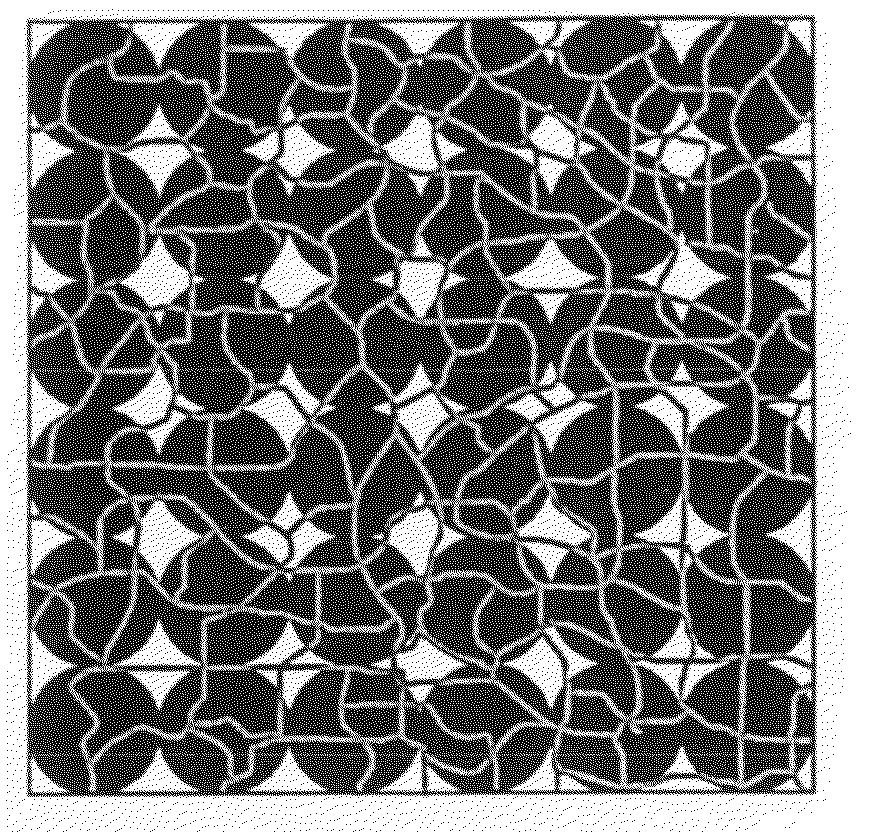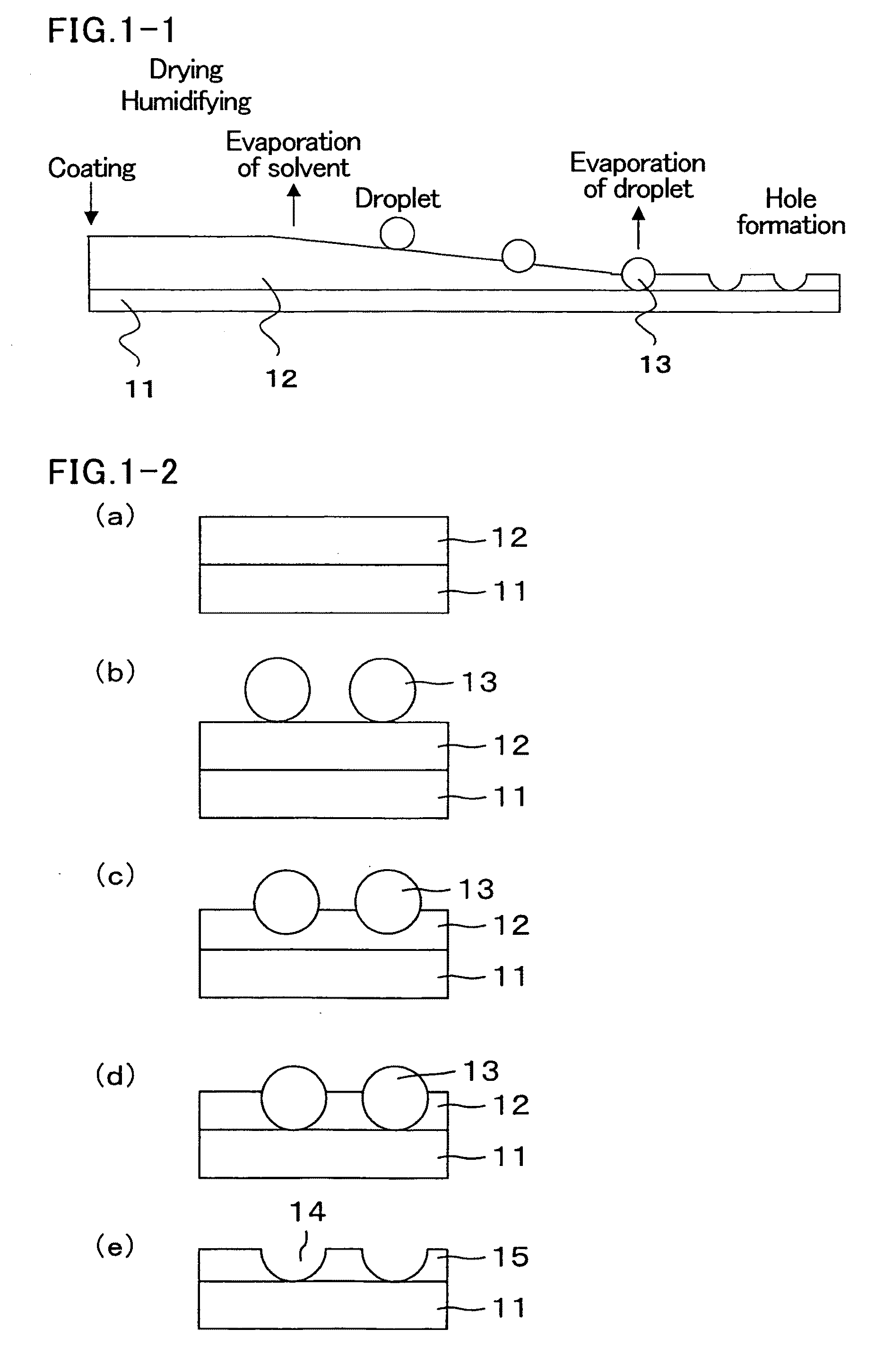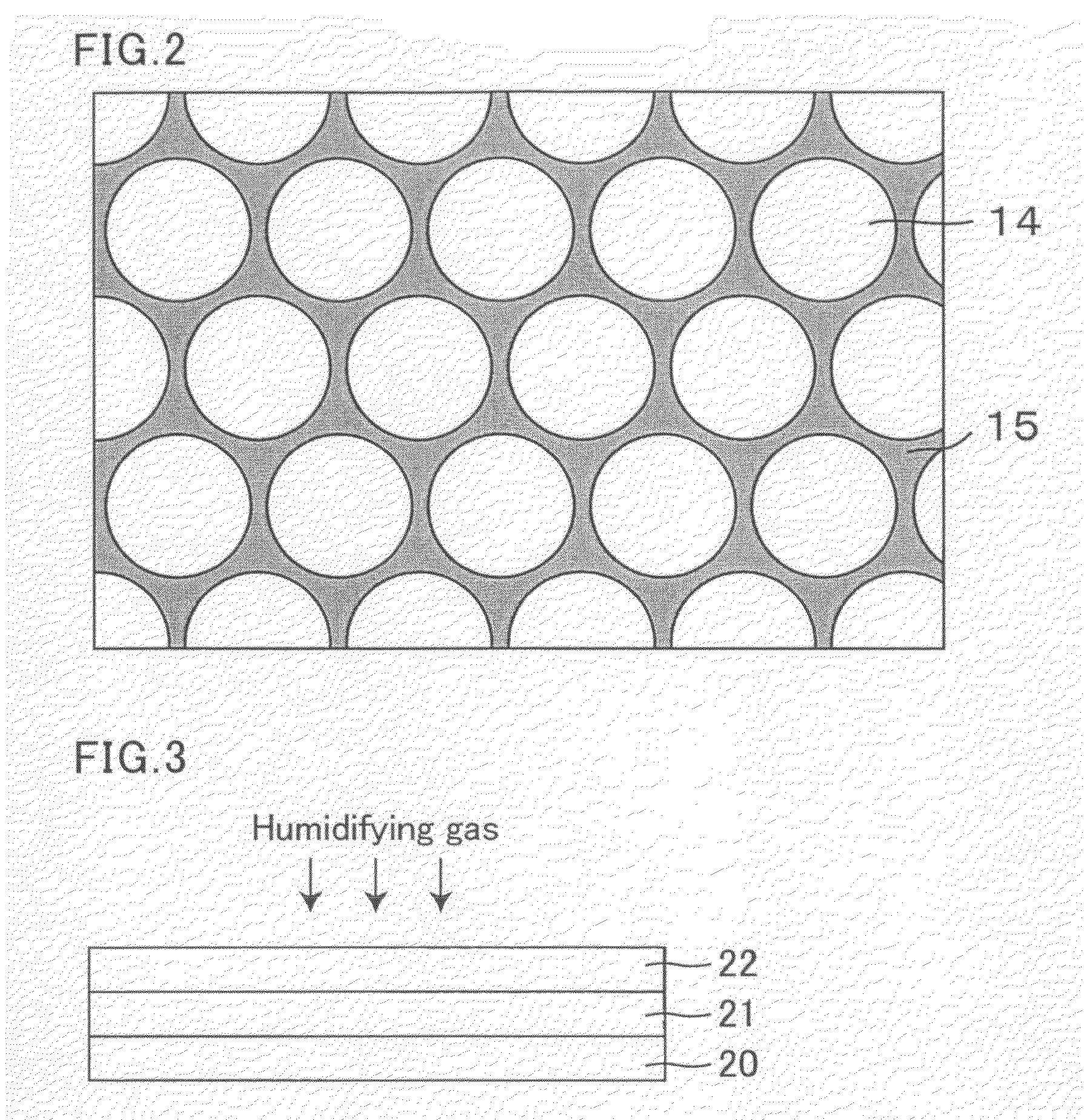Process for producing conductive film and conductive film
a technology of conductive film and conductive film, which is applied in the direction of conductive layers on insulating supports, non-metal conductors, knitting, etc., can solve the problems of low production efficiency of conductive films, low transmittance, and high cost of rare metals such as indium, and achieves fine mesh structure, easy production, and uniform surface
- Summary
- Abstract
- Description
- Claims
- Application Information
AI Technical Summary
Benefits of technology
Problems solved by technology
Method used
Image
Examples
example 1
Conditions for Producing Porous Film
[0114]Using the conductive fine particle dispersion solution (x-1), a toluene solution containing silver at a weight concentration of 2.5 mg / mL and CAP (n:m=4:1, Mn=99000, Mw=280000) at a weight concentration of 1.0 mg / mL was prepared.
[0115]A glass slide was immersed in a saturated potassium hydroxide ethanol solution for two hours, and then subjected to ultrasonic cleansing with water and ethanol for hydrophilization. In this process, the contact angle of the substrate was unmeasurably low, at nearly 0°. About 0.5 mL of the solution was applied on the substrate. The substrate was cooled to 8° C. by a peltier device, and then exposed to humidifying air (relative humidity: 50% or more) blowing at a flow rate of 0.8 m / min for 20 minutes for evaporating the organic solvent, and thereby a dried film was obtained.
[0116]The drying (air-drying) was performed at room temperatures under normal pressures.
[0117]The dried film was placed in an electric furnac...
example 2
Condition for Producing Porous Films
[0131]A benzene solution containing silver at a weight concentration of 1.0 mg / mL and CAP (n:m=4:1, Mn=99000, Mw=280000) at a concentration of 1.0 mg / mL was prepared using the conductive fine particle dispersion solution (x-2). The solution (2.0 mL) was applied on a 5 cm-square slide glass substrate at 25° C. in a relative humidity of 50%. Humidifying air (relative humidity: 90% or more) was blown to the slide glass at a flow rate of 0.6 m / min for 10 minutes for evaporating the organic solvent, and thereby a dry film was obtained.
[0132]The drying (air-drying) was performed at room temperatures under normal pressures.
[0133]The dried film was placed in an electric furnace, with the temperature raised at a rate of 10° C. / min, under normal pressures and air atmospheres, and was fired at 300° C. for 30 minutes. After firing, the film was allowed to stand for cooling to room temperatures. The conductive film had maximum thickness of 0.2 μm, sheet resist...
example 3
Condition for Producing Porous Films
[0137]A cyclohexane solution containing silver at a weight concentration of 1.0 mg / mL and CAP (n:m=7.6:1, Mn=25000, Mw=95000) at a concentration of 1.0 mg / mL was prepared using the conductive fine particle dispersion solution (x-3). The solution (2.0 mL) was applied on a 5 cm-square slide glass substrate at 25° C. in a relative humidity of 50%. Humidifying air (relative humidity: 90% or more) was blown to the slide glass at a flow rate of 0.6 m / min for 10 minutes for evaporating the organic solvent, and thereby a dry film was obtained.
[0138]The drying (air-drying) was performed at room temperatures under normal pressures.
[0139]The dried film was placed in an electric furnace, with the temperature raised at a rate of 10° C. / min, under normal pressures and air atmospheres, and was fired at 300° C. for 15 minutes. After firing, the film was allowed to stand for cooling to room temperatures. The conductive film had maximum thickness of 0.4 μm, sheet r...
PUM
| Property | Measurement | Unit |
|---|---|---|
| Width | aaaaa | aaaaa |
| Area | aaaaa | aaaaa |
| Amphiphilic | aaaaa | aaaaa |
Abstract
Description
Claims
Application Information
 Login to View More
Login to View More - R&D
- Intellectual Property
- Life Sciences
- Materials
- Tech Scout
- Unparalleled Data Quality
- Higher Quality Content
- 60% Fewer Hallucinations
Browse by: Latest US Patents, China's latest patents, Technical Efficacy Thesaurus, Application Domain, Technology Topic, Popular Technical Reports.
© 2025 PatSnap. All rights reserved.Legal|Privacy policy|Modern Slavery Act Transparency Statement|Sitemap|About US| Contact US: help@patsnap.com



